73 F. high in St. Cloud Sunday.
67 F. average high on May 8.
59 F. high on May 8, 2015.
May 9, 1966: Minnesota experiences a widespread hard freeze, with temperatures in the teens as far south as Caledonia.
 Nothing Severe - Welcome Spring Showers This Week
Nothing Severe - Welcome Spring Showers This WeekWere
you outside yesterday? Looking at the sky was the rough equivalent of
staring up through a dirty aquarium, which I don't recommend. An orange
haze? It looked like L.A. - with lakes. Vast smoke plumes from the Fort
McMurray, Alberta mega-blaze have been sweeping south into the USA; a
vivid reminder than everything is interconnected.
Why so bad, so
early in the season? Less winter snow, an early spring and record warmth
were all factors. It's not limited to Canada. "Climate change has led
to fire seasons that are now on average 78 days longer than in 1970,"
the U.S. Forest Service said in an August 2015 report. "The U.S. burns
twice as many acres as three decades ago and Forest Service scientists
believe the acreage burned may double again by mid-century" said a
recent
CNN story.
No complaints about rain in the forecast this week. Anywhere from .5 to 1 inch of rain may fall from this afternoon into
Thursday, followed by cooler air. By late week highs hold in the 50s with a light frost over northern Minnesota next weekend.
No worries: balmy 70s & 80s return late next week.
Second Warmest Start to the Year on Record for U.S. Here's a clip from
Climate Central: "
While
the weather is chilly and rainy along much of the East Coast, the Lower
48 as a whole is having its second hottest year to date, thanks in
large part to major western warmth, the National Oceanic and Atmospheric Administration announced
Friday. That warmth extended all the way up to Alaska, which is seeing
its warmest year on record and temperatures far above normal..."
Map credit: "
How temperatures across the U.S. differed from normal during January-April 2016." Credit: NOAA.
Tracking Smoke Plumes.
That orange-blue haze was the result of massive fires in Alberta;
steering winds aloft pushing the core of the smoke plume southeast into
Minnesota, creating a sky only a Californian could love. Sunday
afternoon visible satellite loop: WeatherTap.
30s by Saturday Morning?
All the models are in agreement; showing a gradual cooling trend into
next weekend, when wake-up temperatures may dip into the 30s. A metro
frost is unlikely, but St. Cloud and Brainerd? All bets are off for
central and northern Minnesota. Model data: Aeris Enterprise.
One More Relapse.
On a positive note it probably won't snow, and the new annuals planted
in the garden should be OK, at least in the metro, but ECMWF data shows
lows dipping into the 30s Saturday through Monday of next week; one
more swipe of formidable Canadian air. Graphic: WeatherBell.
Midweek Soaker?
Our internal model ensembles sent out an alert for 1.1" of rain at MSP
by Wednesday evening at 7 pm. Let it rain - especially on weekdays.
Source: Aeris Enterprise.
A Colorful Precipitation Map = Significant Rains This Week.
4 KM NAM guidance prints out some .5 to 1" rainfall amounts by
Wednesday evening, which seems reasonable, given the slow movement of
the next approaching system. Accumulated precipitation outlook: NOAA and
AerisWeather.
Enough Rain To Settle the Dust - and Smoke.
Latest (00z) NAM guidance prints out 1.53" of rain in the Twin Cities
by late Wednesday night. Your emerging flowers are thrilled to hear the
news.
Warming Trend Returns by Last Week of May.
Have no fear - it will warm up again, as early as next week. Another
bubble of warm high pressure should pull temperatures back into the 70s,
even a few 80s, within 2 weeks or so.
The Fort McMurray Fire Created Lightning That Set Off New Blazes.
These mega-fires literally create their own weather which can help to
perpetuate the blazes until winds ease, humidity levels rise and rain
arrives. Here's an excerpt from VICE News: "...It
takes an extreme fire to produce a thunderhead — and what happened at
Fort McMurray may be a first, said Mike Flannigan, a wildfire researcher
at the University of Alberta. "We've had these types of things with
lighting before, but this may be the first documented case in which
lightning started new fires," Flannigan said. The blaze is so intense,
witnesses have reported that broadleaf trees like aspens — known for
being more resistant to fire than evergreens — "caught fire in one big
whoosh" like a barbecue grill being lit. And if early damage estimates
of $8-9 billion bear out, "It would be the most costly natural disaster
in Canadian history," Flannigan said..."
Explosive Growth. Canada's
CBC News has an animation that shows the mind-boggling spread of the Fort McMurray fire in the span of only 6 days.
Unusual Spring Warmth Helped to Set the Stage for Fort McMurray Conflagration. Here's an excerpt from an explainer at
NASA's Earth Observatory: "...
In
early May 2016, a destructive wildfire burned through Canada’s Fort
McMurray in the Northern Alberta region. Windy, dry, and unseasonably
hot conditions all set the stage for the fire. Winds gusted over 20
miles (32 kilometers) per hour, fanning the flames in an area where
rainfall totals have been well below normal in 2016. Ground-based
measurements showed that the temperature soared to 32 degrees Celsius
(90 degrees Fahrenheit) on May 3 as the fire spread. Satellite
observations also detected the unusual heat. The map above shows land
surface temperature from April 26 to May 3, 2016, compared to the
2000–2010 average for the same one-week period. Red areas were hotter
than the long-term average; blue areas were below average. White pixels
had normal temperatures, and gray pixels did not have enough data, most
likely due to cloud cover..."
NASA map above: temperature anomalies (C) between April 26 and May 3.
Expanding Tropics Pushing High-Altitude Clouds Toward the Poles, NASA Study Finds. Here's an excerpt from NASA: "A
new NASA analysis of 30-years of satellite data suggests that a
previously observed trend of high altitude clouds in the mid-latitudes
shifting toward the poles is caused primarily by the expansion of the
tropics. Clouds are among the most important mediators of heat reaching
Earth's surface. Where clouds are absent, darker surfaces like the ocean
or vegetated land absorb heat, but where clouds occur their white tops
reflect incoming sunlight away, which can cause a cooling effect on
Earth’s surface. Where and how the distribution of cloud patterns change
strongly affects Earth's climate. Understanding the underlying causes
of cloud migration will allow researchers to better predict how they may
affect Earth's climate in the future..."
Swarm of Earthquakes Strikes Mount St. Helens. Another eruption brewing or just business as usual?
CNN reports: "
In
the past eight weeks, more than 130 small earthquakes have trembled
beneath the surface of Mount St. Helens. At this point, "there is
absolutely no sign that it will erupt anytime soon, but the data we
collect tells us that the volcano is still very much alive," the U.S. Geological Survey said. Seismologists reported that there are no anomalous gases, and
no signs that the collection of magma, which is the molten rock beneath
the surface of the Earth, is getting inflated in the recent swarm of
earthquakes at the volcano..."
Image credit above: "
Map view plot of earthquakes located by the Pacific Northwest Seismic Network
from March 14, 2016 through May 5, 2016. Only high-quality locations
are shown (8 or more observations with a 130 degree gap or less between
observing stations)."
Just How Much Power Do Your Electronics Use When They are "Off"?
As long as they're plugged in they're in "vampire mode", sucking small
amounts of electricity, which in the aggregate really adds up. Here's a
clip from a
New York Times article that had me unplugging all my gadgets: "...
It adds up. About a quarter of all residential energy consumption is used on devices in idle power mode, according to a study of Northern California
by the Natural Resources Defense Council. That means that devices that
are “off” or in standby or sleep mode can use up to the equivalent of 50
large power plants’ worth of electricity and cost more than $19 billion
in electricity bills every year. And there’s an environmental cost:
Overall electricity production represents about 37 percent of all carbon dioxide emissions in the United States, one of the main contributors to climate change..." (File photo: AP).
First Autonomous Robot to Operate on Soft Tissue Outdoes Human Surgeons. Is surgery the next industry to be disrupted? Here's the intro to a story at
Ars Technica: "
Step
aside, Ben Carson. The once lauded ability to perform delicate
operations with gifted hands may soon be replaced with the consistent
precision of an autonomous robot. And—bonus—robots don’t get sleepy. In a
world’s first, researchers report using an autonomous robot to
perform surgical operations on soft tissue and in living pigs, where
the adroit droid stitched up broken bowels. The researchers published
the robotic reveal in the journal Science Translational Medicine, and
they noted the new machinery surpassed the consistency and precision of
expert surgeons, laparoscopy, and robot-assisted (non-autonomous
robotic) surgery..." (Photo:
Axel Krieger.)
Shelby Challenges Seniors to "Get Out of their Seats". Don's a good friend - so he won't care if I show up and heckle him (from my seat). Here's an excerpt at
Eden Prairie News: "...
The
first part of our lives is basically lived in a cocoon of protection
and tutelage and then we go out into the world and struggle,” he said.
“It is a slog for a lot of people to get through to a point when they
can at last retire. Then society tells us that we’re of no use. We’ve
served our useful purpose. Now why don’t you just slip into the
background and be quiet and let the new generation handle the world?
“And it’s a shame that all of that accumulated wisdom, knowledge and
experience is cast aside by commentators and media that tells people
that they’re now aged, the elderly, the senior citizens. “The message is
wrong. We have a lot more to give. We have the most to give,” Shelby
said..."
32,000 People Sign Up For Priviledge of Dining in the Nude. CNN has the
hard-hitting story that may leave you with a diminished appetite.
What Do Consumers Want? Look at their Selfies. Now you can market your selfies - to sell toothpaste. Here's an excerpt from
The New York Times: "...
If
Ms. Shragal takes enough selfies with her smartphone and uploads them
to a special app, she has “an extra $20 to go get my nails done,” she
said. Her seemingly mundane images, when combined with thousands of
others, contain insights that companies like Crest are eager to mine.
They are using a Chicago-based company called Pay Your Selfie
to gather those insights and present them in reports on consumer
behavior that are meant to go where focus groups and surveys cannot..."
A 3-D, 30K Lifesize Replica of Yourself.
Why not, for people who have more money than sense this sounds like the
gift that will keep on giving! Here's an excerpt of a fascinatingly
troublilng article at
The Next Web: "
Today
in “Sure, why not,” Groupon is offering – what else – a deal of a
lifetime that lets you 3D print a life-size replica of yourself for only
$30,000. And it’s being offered as Mother’s Day special. In collaboration with Alabama-based 3D-printing company SWIGRO, the
deal includes travel to the headquarters to create your body’s
blueprint and framework, and free shipping within the United States. It
won’t likely arrive in time for actual Mother’s Day (this Sunday, May 8)
but if you’re seriously considering getting this as a gift for the lady
who raised you, we’re guessing it doesn’t matter when mom’s day is..."
TODAY: Clouds increase - PM showers likely, possible thunder. Winds: SE 15-30. High: 64
MONDAY NIGHT: Showers likely. Low: 53
TUESDAY: Cooler with showers in the area. Winds: SE 10-15. High: 62
WEDNESDAY: Another surge of rain, possible storms. Winds: SW 10-15. Wake-up: 54. High: 68
THURSDAY: Cooler, showers slowly taper. Winds: NW 10-20. Wake-up: 52. High: 62
FRIDAY: Brisk. Mostly cloudy, isolated shower. Winds: NW 10-20. Wake-up: 47. High: 56
SATURDAY: Gusty and cool. Where's spring? Winds: NW 15-25. Wake-up: 40. High: 54
SUNDAY: Early frost up north? Partly sunny, not as windy. Winds: NW 10-15. Wake-up: 37. High: 61
Climate Stories...
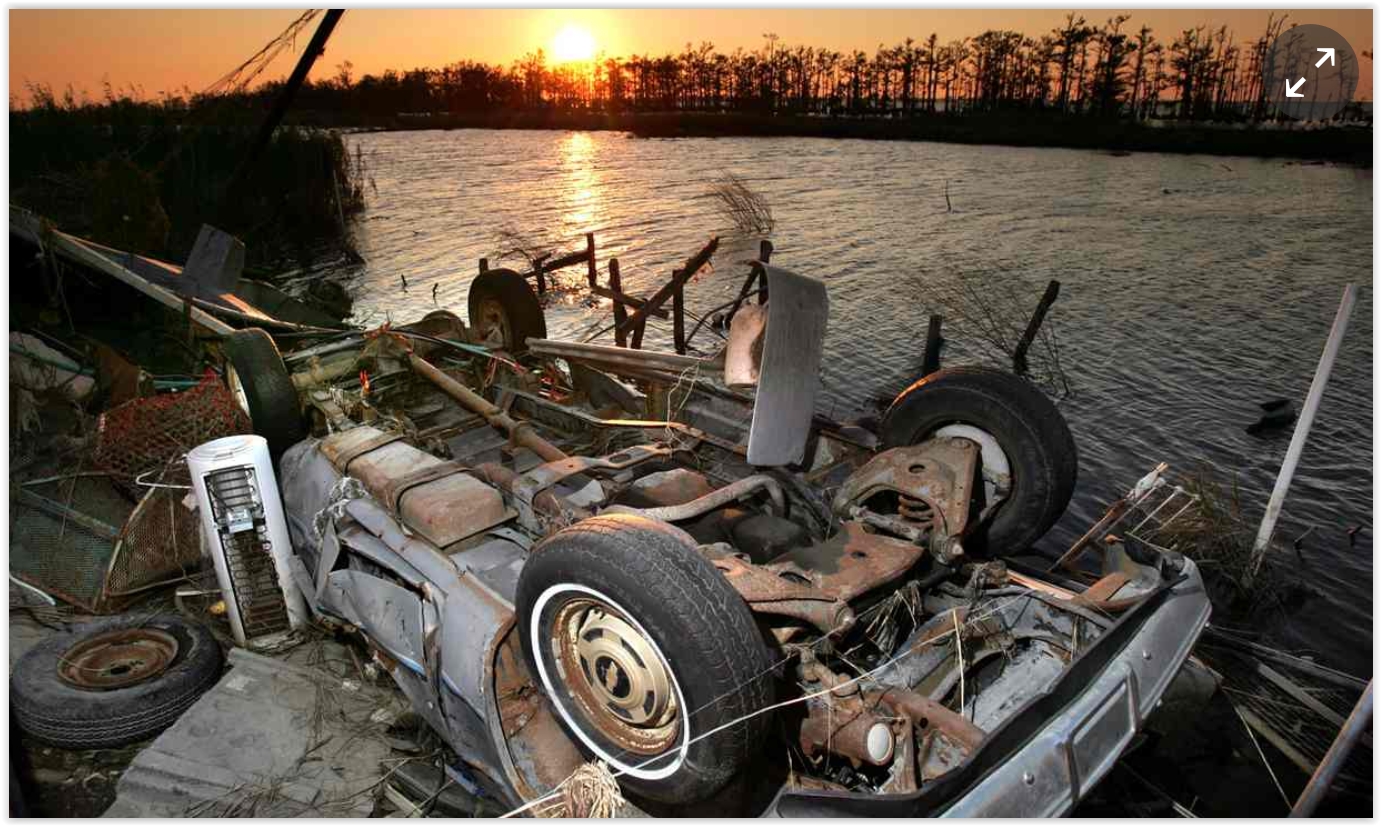 The Coming Refugee Crisis: When Home Leaves Us.
The Coming Refugee Crisis: When Home Leaves Us. Here's an excerpt of a poignant essay at
The Guardian: "...
The
economic, political and psychological toll of the coming droughts,
famines, wars, storms and rising seas is difficult to fathom. Yet
remarkably, even in this active political season, the need to adapt to
climate change has hardly been mentioned. For Louisiana, my home state,
the stakes couldn’t be higher. We’ve lost the equivalent of Delaware’s
entire landmass over the past century, and the familiar outline of the
state is being eaten away. The wetlands that once provided bountiful
resources while serving as a buffer against storms and floods are
continuing to vanish at an alarming rate. Watching the Louisiana coast
sink faster than any other shoreline on the planet while being buffeted
by ever-rising seas and storms, one thing is clear. It’s not that we are
leaving home, but that home is leaving us..."
Photo credit above: "
A car lies upside down at the edge of a marsh amid other storm debris from Hurricane Katrina." Photograph: Robert F. Bukaty/AP.
We Need to Talk About Climate Change. Meteorologist
Eric Holthaus connects the dots and explains why it's necessary to talk
about the conditions that prime the pump for extraordinary events;
here's an excerpt from his essay at
Slate: "...
Many
people have expressed outrage at the fact that climate change is being
mentioned as a contributing cause to this fire. It is “insensitive” to
the victims to bring up something so political at a time like this, they argue.
I want to be clear: Talking about climate change during an ongoing
disaster like Fort McMurray is absolutely necessary. There is a
sensitive way to do it, one that acknowledges what the victims are going
through and does not blame them for these difficulties. But adding
scientific context helps inform our response and helps us figure out how
something so horrific could have happened. We’ve reached an era where all weather events bear at least a slight human fingerprint, which, as Elizabeth Kolbert points out in the New Yorker, means “we’ve all contributed to the latest inferno...”
The Fire in Canada Looks a Lot Like Climate Change - And That Should Scare You. Or at least get your attention - again. Here's an excerpt from an Op-Ed at
CNN: "...
This
is an example of what we expect -- and consistent with what we expect
for climate change," said Mike Flannigan, a professor of wildland fire
at the University of Alberta who's been studying climate change and
wildfire for decades. "This fire is unprecedented," he said, referring
to its local impact. It's impossible for scientists to say global
warming caused this specific fire, of course, but polluting the
atmosphere is creating conditions that make such disasters more likely,
bigger and costlier. "In Canada, our area burned (by wildfire) has more
than doubled since thLe early 70s," Flannigan said. "And we've published
work that states that this is because of human-caused climate change..." (Image credit:
metronews.ca).
How Climate Change May Be Fueling Canada's Fire Season.
The Washington Post has additional perspective; here's an excerpt: "...
Robinson
has suggested that earlier melting, like what we’ve seen in the
northern hemisphere this spring, can give forests and grasslands a
chance to dry out earlier and provide the potential for a longer fire
season. It’s a point other experts have raised as well. “The earlier the snow melts, the longer the fire season — so the more days during which fires can ignite and burn,” said David Martell,
a forestry professor and fire expert at the University of Toronto, by
email, although he noted that he’s unaware of any studies that have
explicitly investigated this connection..."
Photo credit above: "A photo provided by the Canadian Armed Forces shows a view of the wildfires in Fort McMurray, Alberta, on May 4." (Canadian Armed Forces via European Pressphoto Agency).
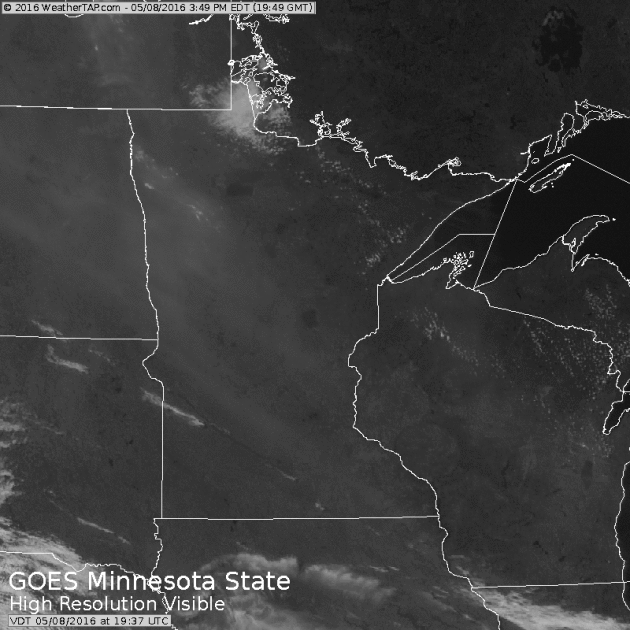
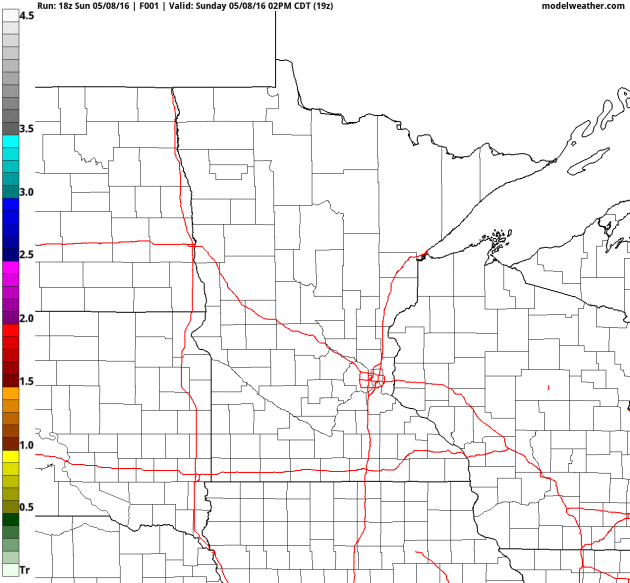
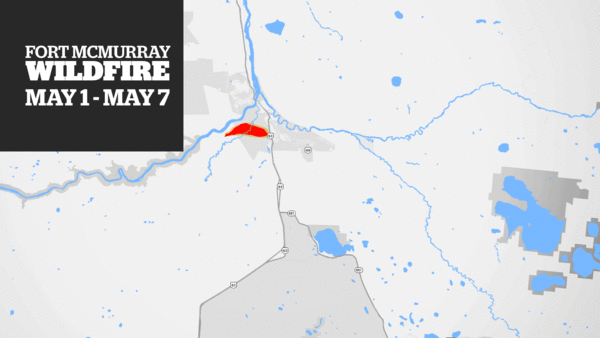
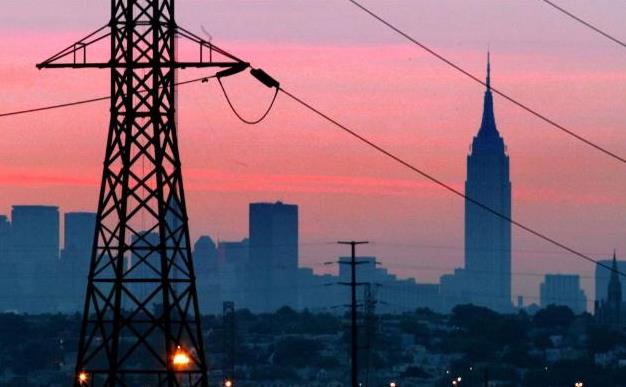
No comments:
Post a Comment